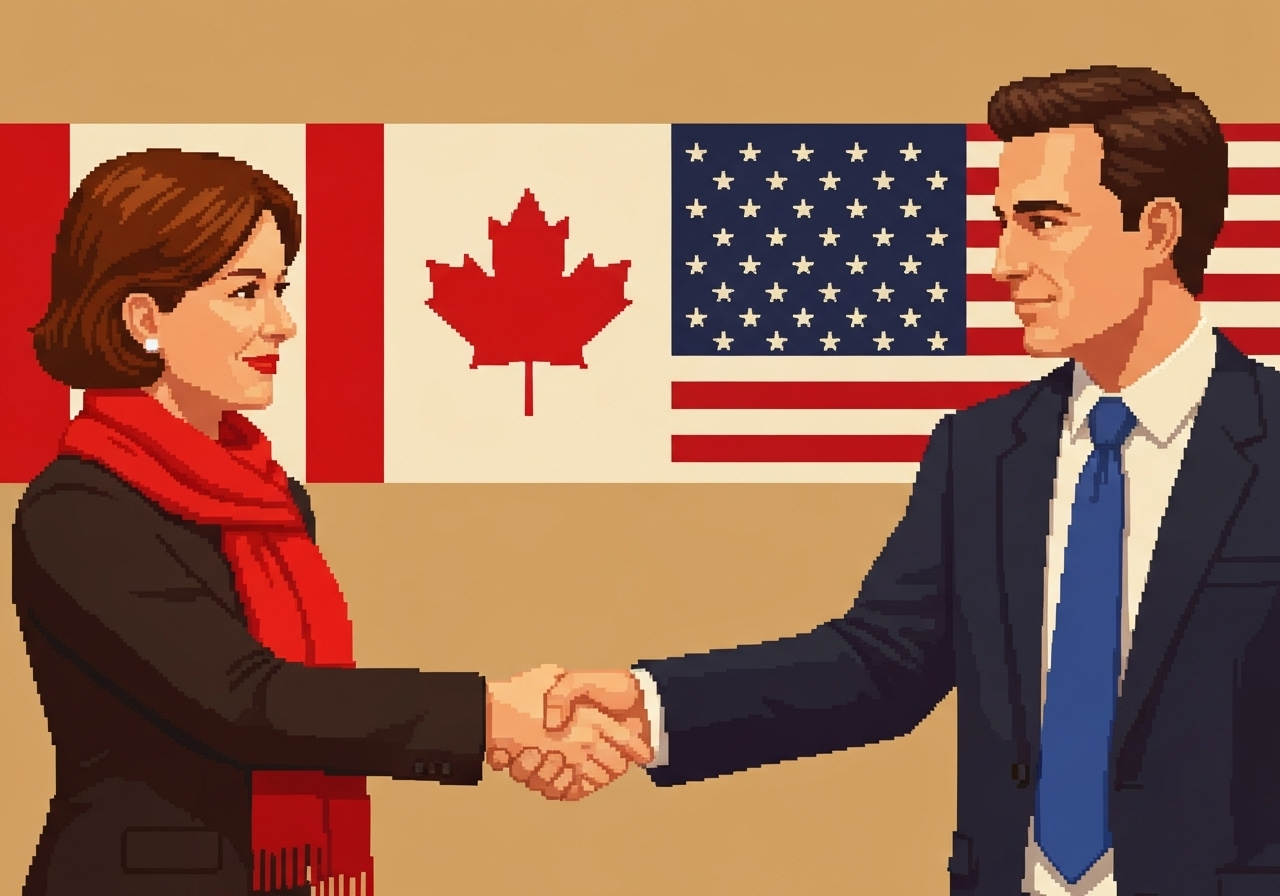Key Highlights
- The Canadian government, led by the prime minister, is dropping some of its retaliatory tariffs on U.S. goods, a major step in the ongoing trade war.
- Effective September 1, the change removes a 25 per cent levy on many U.S. goods compliant with the existing free trade agreement.
- This decision aims to re-establish free trade for the majority of products moving between the two nations.
- However, Canada will maintain its tariffs on key U.S. goods like autos, steel, and aluminum for now.
- The move follows a productive phone call between Prime Minister Mark Carney and President Donald Trump to restart trade talks.
Introduction
Canada has made a big change in its trade policy. It has removed many of the retaliatory tariffs that it had put on goods from the United States. This is important because it could help end the trade war between the two countries. The Canadian tariffs started after the U.S. put duties on Canadian goods. Because of this, doing business became hard for people in both countries. Now, Canada is showing a new plan. This plan is trying to make things less tense and solve the problems between the two.
Reasons Behind Canada’s Decision to Drop Many Tariffs

The federal government chose to lift many tariffs for a mix of strategic and economic reasons. One big reason was a recent phone call that went well between the prime minister and President Trump. This call helped restart trade talks. Because of this step, both sides might be open to better talks and changes in policy.
This move also happens at a time when both countries are getting ready to look at the trade agreement again next year. By dropping some of these measures, the Canadian government wants to lower tensions. They hope this will help both sides fix any problems, such as national security concerns or worries about important industries. The parts that follow will look closer at these changes and the main reasons behind them.
Recent developments in U.S.–Canada trade relations
A big moment came when Prime Minister Mark Carney and President Donald Trump had a phone call. This was the first time the two leaders spoke after they missed a deadline for a trade deal. President Donald Trump told Prime Minister Mark Carney that ending the retaliatory tariffs would help get more serious talks going between the United States and Canada.
After the news came out, the White House showed it was happy with the decision. An official said the move was “long overdue.” The Trump administration said it wants to keep talking with Canada about trade and national security. Their response shows that both sides want to calm down the trade fight, but are still being careful.
All these things are happening while the United States-Mexico-Canada Agreement (USMCA) is about to be reviewed. The Trump administration has hinted they may try to make changes to the trade agreement. U.S. Commerce Secretary Howard Lutnick said, “I think the president is absolutely going to renegotiate USMCA.” This possible review puts more pressure on Canada. That is why Canada is changing its tariff plan right now.
Factors influencing Canada’s policy shift
The Canadian government has changed its policy because it wants to protect its economy. Prime Minister Mark Carney said that Canada still gets a better trade deal with the U.S. than any other country. He said this step is to “preserve this unique advantage for Canadian workers and businesses.” The federal government did not make this choice without pressure from others. Many factors played a role in this move.
The main reasons the federal government changed the policy are:
- Easing tensions: This change tries to make things go smoother before the formal review of the CUSMA/USMCA trade pact next year.
- Restarting negotiations: The government is listening to the U.S., which says that dropping tariffs could make talks stronger in some strategic sectors that still have duties.
- Addressing domestic concerns: The government learned that its own way of fighting back with tariffs was hurting Canadian small businesses, so it wants to respond to that.
Dominic LeBlanc, who looks after Canada-U.S. trade, agreed with this strategy. He said that stepping back on tariffs helps the government get into a good position for the next year’s CUSMA review. Still, the Canadian government has kept its 25 per cent tariffs on American steel, aluminum, and autos. By doing this, it is showing that it will keep standing up for its own strategic sectors.
Impact of Tariff Removal on Canadian Consumers and Businesses

The end of these tariffs is set to make a real change for the Canadian economy. Many people in Canada will likely see lower prices and more choices for some U.S. consumer goods. This move should also help out a lot of Canadian companies. Small businesses, as well as bigger ones, have had a hard time because of the trade problems, so this relief comes at a good time.
But, not every part of the market will get the same benefits. While some businesses will get a boost from free trade, there are still sectors that have old tariffs and must deal with more problems. In the next parts, we will look closer at how pricing could change for shoppers. We will also talk about what business owners, including those running small businesses and other Canadian companies, think about the changes.
Business owner perspectives and likely effects
The response from the Canadian business community to the removal of tariffs is mixed. There are people who are happy about it, but not everyone feels the same way. The Canadian Federation of Independent Business (CFIB) called the news a “step in the right direction.” They said it will remove some of the pressure on small businesses in Canada. This is good for the many small business owners who said the tariffs Canada used against the U.S. hurt them just as much as the ones from the U.S.
But not all business owners or groups see it as good news. The impact on businesses is different for each sector:
- Relief for small businesses: Companies that bring in items from the U.S. will pay less. This helps with the money problems they have been facing.
- Concerns from labor: Unifor, the biggest private sector union in Canada, said ending the tariffs is a bad move. They believe it will allow the U.S. to act more aggressively.
- Ongoing struggles in key sectors: Businesses in the auto, aluminum, and steel sectors will keep struggling. The tariffs that hurt them the most have not gone away.
This shows that the issue is not simple. The CFIB is asking the federal government to help companies that already lost money from these tariffs. People like Lana Payne from Unifor say Canada should not give up its power unless the U.S. removes all penalties. Now, businesses in important areas must still deal with
Conclusion
Canada has decided to end many of its retaliatory tariffs that were put in place against the U.S. This move marks a big change in how both countries trade with each other. It could have a lot of effects on both people who buy things and the companies that sell them.
With the lower tariffs, pricing is expected to get better and U.S. products will likely be easier to find in Canada. Because of this, people in Canada might pay less for goods and have more options to choose from in stores.
If you own a business, this could mean new chances to grow, since trade is now more open and it should be easier to buy and sell goods.
It’s a good idea to keep up with this news. Think about how these changes with retaliatory tariffs might affect what you buy or how you run your business. If you want more advice, you can always ask for a consultation.




